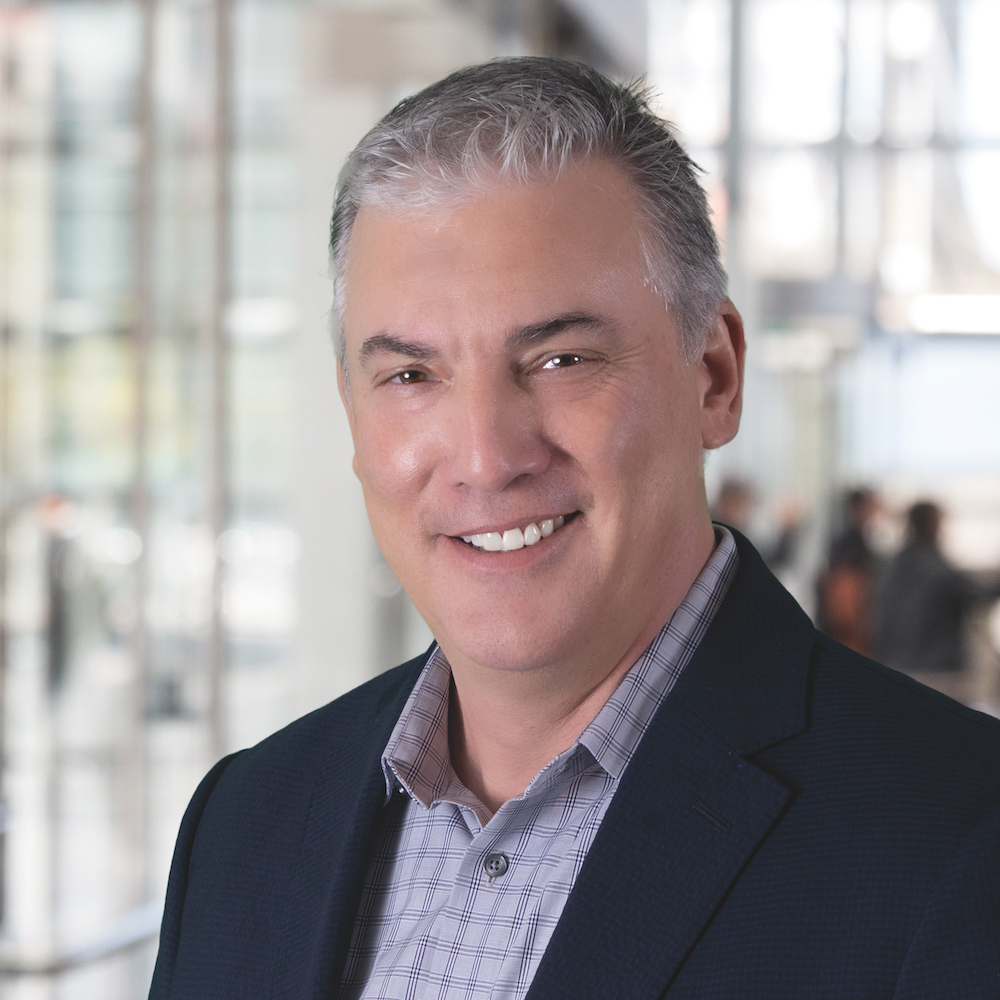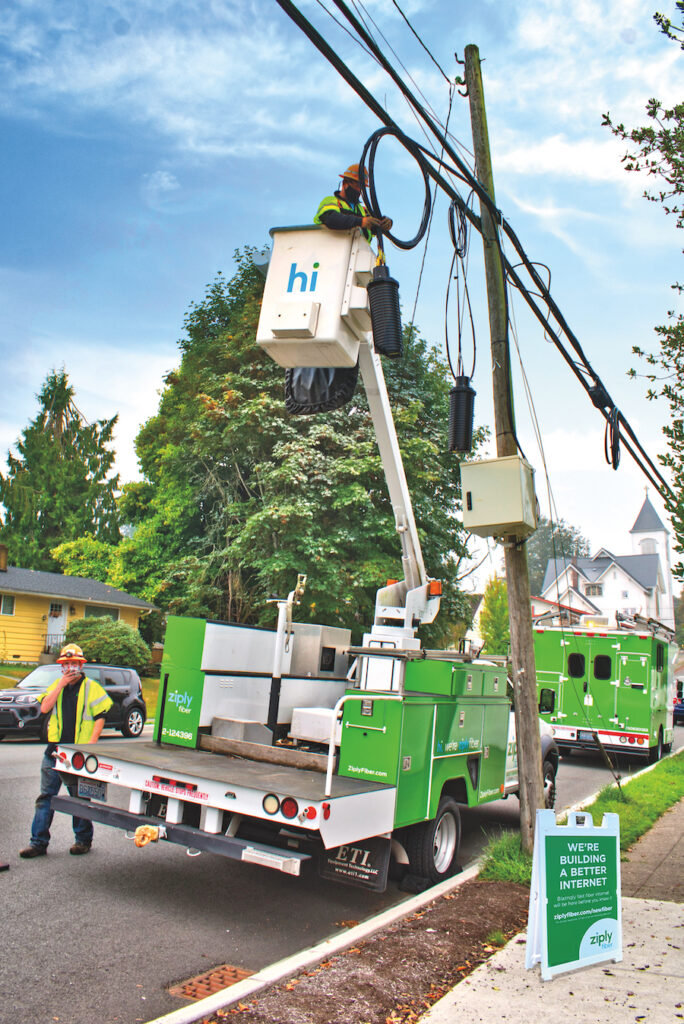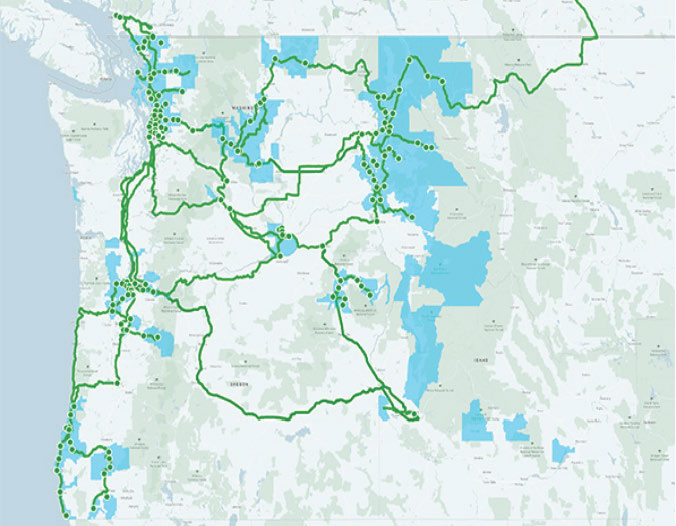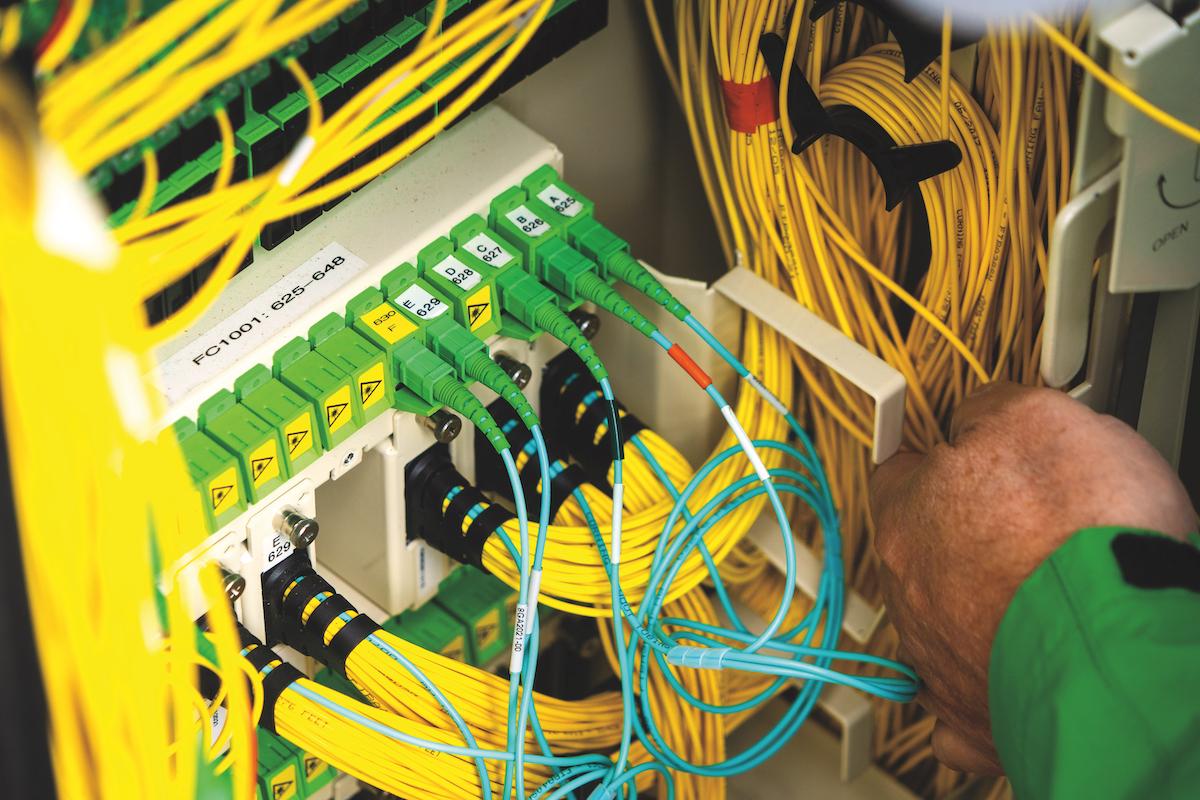Brand Story-Ziply Fiber’s reliable, maximum-speed connectivity transforms businesses, economies.
When Ziply Fiber acquired a traditional telecoms company in 2020, it had much bigger plans than just using the phonelines included in the deal. Instead, the organization diverged from the industry norm and committed to delivering a 100% fiber optic network that connects Pacific Northwest communities of all sizes.
“The natural assumption was that we would operate the business we acquired with the technology we acquired or that we were going to make slight upgrades,” explains Chris Gellos, General Manager for Commercial Business, Ziply Fiber. “The reality is that we over-built an entirely new network. We want to serve businesses and residents for the long term, and that requires technology that is evergreen.”

Since 2020, the company has added 286,000 new fiber locations, and in 2022, laid over 1,700 miles of new fiber. It recently announced its 100th new fiber build, bringing service to tens of thousands of residences and businesses in Yakima, Washington.
Fiber technology lets data travel at the speed of light, facilitating unparalleled download and upload speeds. While large cities often have access to the services and innovations enabled by this level of connectivity, many smaller communities have yet to reap its benefits. Ziply Fiber has seen the transformative effect of fiber as it turns small towns into potential innovation hubs or new talent pools overnight.
Due to its commitment to bringing quality broadband services to rural communities and large cities alike, the company received the 2021 Oregon Connections Award for its positive impact on Oregon residents and businesses.
“We are serving communities that have been promised fiber for decades, and for one reason or another it never materialized,” Gellos elaborates. “When we entered the business, it was with the focus of actually fulfilling that promise. Three years later, we’ve consistently shown that commitment. It sounds contrived, but when you see how our services truly change people’s lives, it’s rewarding to be a part of.”
The power of highspeed connectivity came into heightened focus during the pandemic as organizations migrated to home offices: The quality of connectivity correlated with the quality of work and the agility of businesses. Since then, decentralized work structures and satellite offices mean that more people can live where they want, spreading wealth across Oregon rather than consolidating it in major cities. Fiber is a central facilitator of this new reality.

Xperience Brokerage Network is one case in point. When its CEO Chris Suarez decided to move to a winery in Oregon’s Tualatin Valley, he needed connectivity that would let him run his billion-dollar businesses from home. In short, he needed fiber, but internet service providers declined to get involved, citing a lack of return on investment. Suarez eventually found a partner in Ziply Fiber, a longtime proponent of connecting rural communities, who built the necessary 1,800-foot fiber line.
In addition to featuring multilocal work structures, today’s landscape presents rising natural disasters and continued crises. In moments like these, phone and internet lines become lifelines, as witnessed in the 2020 Detroit, Oregon, fires.
As a true Pacific Northwest company, Ziply Fiber’s operations teams belong to the communities they serve and had a technician living in the nearby town of Stayton who was able to enter the town even while fires still burned on the ground. By restoring services quickly, the team unlocked essential communication channels for first responders and displaced residents.
Whether due to fires, thunderstorms, heatwaves or any number of unforeseen events, internet outages can have serious ramifications. Because fiber equipment is not susceptible to temperature, humidity or electrical shortages, it is significantly more impervious to weather-related outages. Fiber only requires working power at its two end points, so it is not at risk of disruptions from lightning strikes or loss of utility power at intermediate points. Ziply Fiber pushes this level of reliability even further.

“The real difference in performance starts with the manner in which a network is architected. We maintain traffic utilization to just 40% of the capacity of our routes, and this is important because it allows the network to reroute any traffic, as needed, with more than enough capacity to handle a complete fiber cut without degradation in performance for end users,” Gellos says. “It’s more common for carriers to manage their capacity to 80% utilization to maintain some headroom for peak traffic spikes, but not account for the capability to pick up another route’s traffic in its entirety.”
This difference matters when unexpected damage to infrastructure strikes. For example, if one fiber cable is compromised, traffic is rerouted to another. But if both routes operate at 80 percent capacity, this merge leads to massively degraded service. On the other hand, when two paths with 40 percent capacity combine, users experience zero adverse performance impacts.
In addition to capacity management, maintaining diverse access routes for traffic is critical to a network’s reliability. Ziply Fiber maintains a “triverse” routing principle with three routes to virtually every major location. As a regional player rather than a national network, the team can quickly locate and reach infrastructure interruptions and have firsthand familiarity with the regions they serve.
“We have always strived to be local in our approach,” Gellos explains. “We are part of these communities. I grew up in Oregon, and it’s a vibrant state. Our team has been in these communities their entire lives. We’re building this out for our community and for ourselves.”
When expanding into new markets, Ziply Fiber takes a collaborative approach—often partnering with cities to deliver the infrastructure they need. The company has worked with dozens of municipalities to secure federal and state grants to build fiber networks, allowing the cities and Ziply Fiber to achieve success faster than they would on their own.
According to Gellos, the economic benefits are measurable: “When they get the connectivity they’ve been thirsting for, it expands opportunity in these markets for both local businesses and those who may seek to join the community. Businesses are saying they need to be where there’s highspeed connectivity and it is absolutely a part of their primary decision making when evaluating cities they look at for expansion.”
Ziply Fiber continues to work with cities to bring maximum-speed connectivity to every corner of Oregon, committed to the belief that digital inclusion remains the best path forward for the state, the economy, the company, and their shared future.
For more on how Ziply Fiber partners with municipalities and public organizations, visit its Civic Partnerships Page at ZiplyFiber.com.
Brand stories are paid content articles that allow Oregon Business advertisers to share news about their organizations and engage with readers on business and public policy issues. The stories are produced in house by the Oregon Business marketing department. For more information, contact associate publisher Courtney Kutzman.





